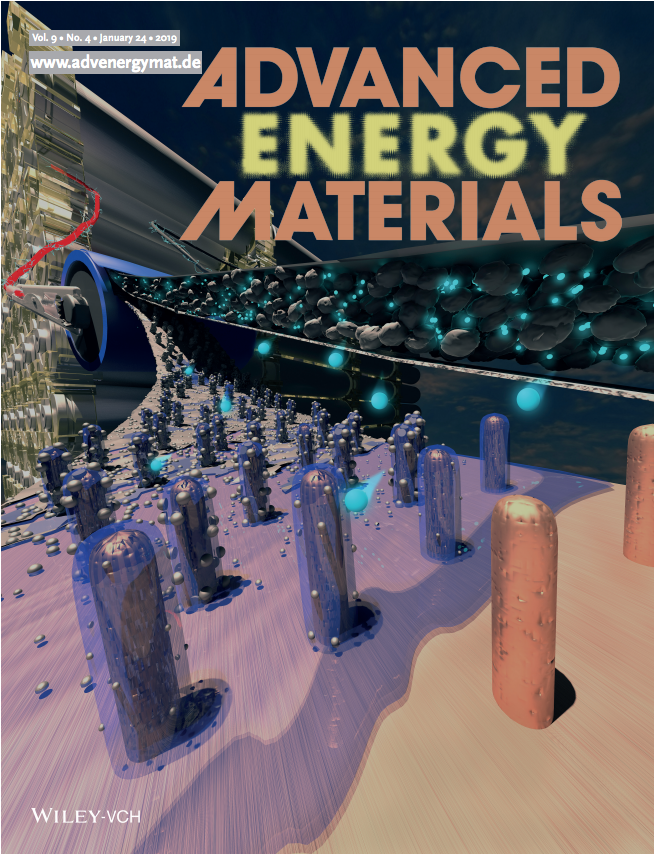Preparing for the future by doing the research now, Neil Dasgupta and colleagues of U-M’s Mechanical Engineering Department (ME), sponsored by the Ford Alliance Project, designed a lithium-metal battery anode with a 99.5% Coulombic efficiency, matching the highest recorded efficiency value to date.
Today’s Li-ion batteries are approaching their energy density limits, the limits of how much charge they can hold, and how many times they can be recharged before fading of that storage capacity begins. Inside the battery, there are three parts, the positive electrode, negative electrode and an electrolyte which sits between them. Dasgupta and his team’s approach concentrates on the negative electrode, which normally contains graphite but could be replaced in the future by pure metallic lithium. By using pure lithium metal, the energy density of the anode can be increased by 10 times, but due to its fast degradation when recharging, the anode can become unstable and a challenge to work with.
 To help combat this degradation, which results in a low Coulombic efficiency (the amount of charge that can be cycled when charging and discharging), the team took a design approach and built micro- and nano-scale copper pillars coated with an Atomic Layer Deposition (ALD), which allowed for optimization of the electrode performance and resulted in a notable increase the Coulombic efficiency. “We approached the problem from a design perspective and by tuning the spacing, size, diameter, we were able to rationally design a 3D architecture to improve the reversibility,” explained Assistant Professor of Mechanical Engineering, Neil Dasgupta. An additional benefit is this technique requires the use of less lithium inside the battery and therefore, makes the batteries safer. The results were published in a paper titled “Synergistic Effect of 3D Current Collectors and ALD Surface Modification for High Coulombic Efficiency Lithium Metal Anodes”, which was featured on the front cover of the Journal Advanced Energy Materials.
To help combat this degradation, which results in a low Coulombic efficiency (the amount of charge that can be cycled when charging and discharging), the team took a design approach and built micro- and nano-scale copper pillars coated with an Atomic Layer Deposition (ALD), which allowed for optimization of the electrode performance and resulted in a notable increase the Coulombic efficiency. “We approached the problem from a design perspective and by tuning the spacing, size, diameter, we were able to rationally design a 3D architecture to improve the reversibility,” explained Assistant Professor of Mechanical Engineering, Neil Dasgupta. An additional benefit is this technique requires the use of less lithium inside the battery and therefore, makes the batteries safer. The results were published in a paper titled “Synergistic Effect of 3D Current Collectors and ALD Surface Modification for High Coulombic Efficiency Lithium Metal Anodes”, which was featured on the front cover of the Journal Advanced Energy Materials.
The importance of looking to the future of batteries is key during a time when reducing our carbon footprint is big and yet, consumers have doubts about electric vehicle viability. Many consumers have “range anxiety”, meaning they are worried about the battery of the electric car losing all of its charge before they reach their destination. Replacing today’s graphite anodes with lithium metal is a key step to ensure farther travel distance, which is crucial in reducing those anxieties.
“This work demonstrates an impressive improvement in Coulombic efficiency when cycling a lithium metal electrode using realistic current densities. High-efficiency cycling of Li metal will be key to delivering the cell life customers expect and the energy density needed for packaging long-range energy storage systems. Although there is still a long way to go to reach automotive targets, this result shows that a combination of a structured current collector with an inexpensive coating may one day make cells based on lithium metal anodes practical,” said Dr. Andy Drews from Ford Motor Company.
We strive to anticipate the changes ahead and provide scientific and technological leadership – for the common good. Michigan Engineering is home to top-ranked departments that collaborate within the nation’s number one public research institution – The University of Michigan.
